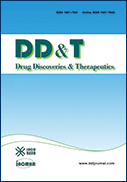13 巻, 2 号
選択された号の論文の10件中1~10を表示しています
- |<
- <
- 1
- >
- >|
Original Articles
-
原稿種別: research-article
2019 年 13 巻 2 号 p. 62-69
発行日: 2019/04/30
公開日: 2019/05/11
PDF形式でダウンロード (709K) -
原稿種別: research-article
2019 年 13 巻 2 号 p. 70-79
発行日: 2019/04/30
公開日: 2019/05/11
PDF形式でダウンロード (2243K) -
原稿種別: research-article
2019 年 13 巻 2 号 p. 80-88
発行日: 2019/04/30
公開日: 2019/05/11
PDF形式でダウンロード (1888K) -
原稿種別: research-article
2019 年 13 巻 2 号 p. 89-95
発行日: 2019/04/30
公開日: 2019/05/11
PDF形式でダウンロード (517K) -
原稿種別: research-article
2019 年 13 巻 2 号 p. 96-100
発行日: 2019/04/30
公開日: 2019/05/11
PDF形式でダウンロード (555K) -
原稿種別: research-article
2019 年 13 巻 2 号 p. 101-107
発行日: 2019/04/30
公開日: 2019/05/11
PDF形式でダウンロード (393K) -
原稿種別: research-article
2019 年 13 巻 2 号 p. 108-113
発行日: 2019/04/30
公開日: 2019/05/11
PDF形式でダウンロード (628K)
Brief Report
-
原稿種別: research-article
2019 年 13 巻 2 号 p. 114-117
発行日: 2019/04/30
公開日: 2019/05/11
PDF形式でダウンロード (1542K)
Case Report
-
原稿種別: case-report
2019 年 13 巻 2 号 p. 118-121
発行日: 2019/04/30
公開日: 2019/05/11
PDF形式でダウンロード (850K) -
原稿種別: case-report
2019 年 13 巻 2 号 p. 122-127
発行日: 2019/04/30
公開日: 2019/05/11
PDF形式でダウンロード (909K)
- |<
- <
- 1
- >
- >|
